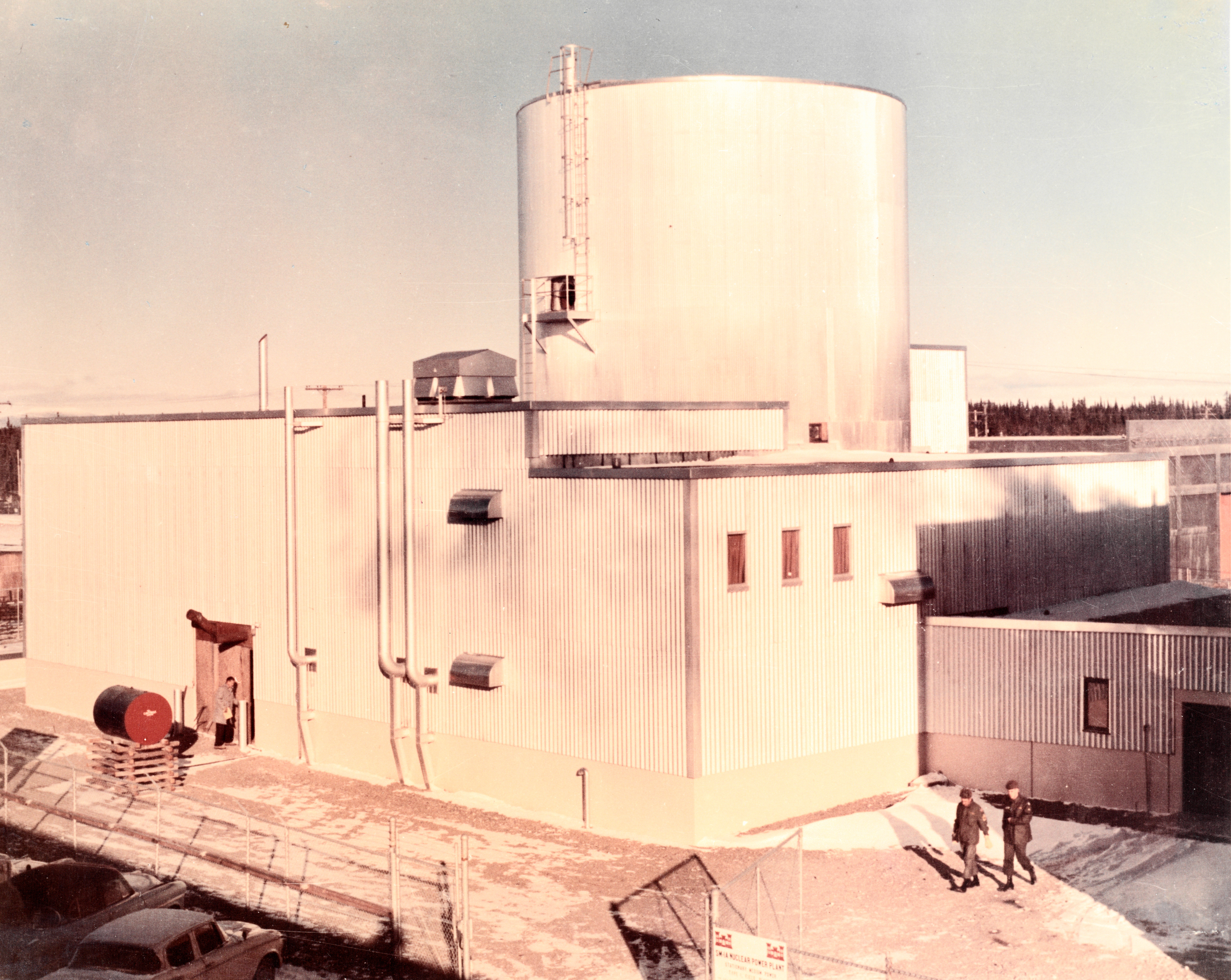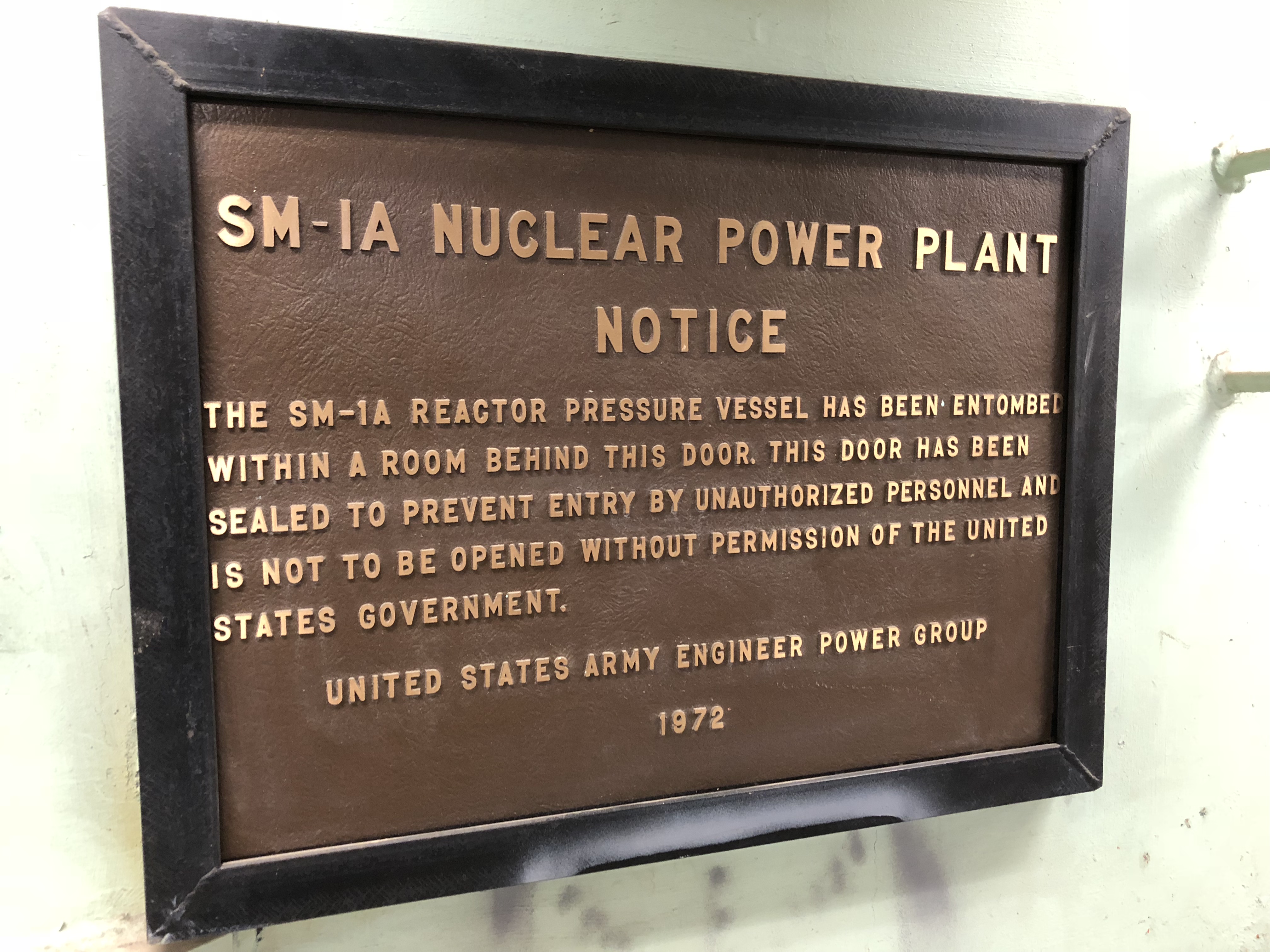The SM-1A Nuclear Power Plant is located in central Alaska, approximately 6 miles south of Delta Junction on the Fort Greely Military Reservation. Fort Greely is approximately 100 miles southeast of Fairbanks and 225 miles northeast of Anchorage.
 The construction of the SM-1A at Fort Greely began in 1958 and was completed in 1962 with first criticality achieved on 13 March 1962. The design was based on the concept of the SM-1 reactor at Fort Belvoir, Virginia, a prototype for stationary medium-power plants (“SM”). The “1A” moniker designates it as the first field plant of its type.
The construction of the SM-1A at Fort Greely began in 1958 and was completed in 1962 with first criticality achieved on 13 March 1962. The design was based on the concept of the SM-1 reactor at Fort Belvoir, Virginia, a prototype for stationary medium-power plants (“SM”). The “1A” moniker designates it as the first field plant of its type.
It was designed to be used as an “inservice” test facility for this type of equipment in an arctic environment with its primary mission being to supply electrical power and heating steam for the utility systems at Fort Greely. The secondary mission was to study the economics of operating a nuclear-type electrical plant compared to conventional oil-fired systems in a remote area where fuel costs are high and supply lines unusually long. The SM-1A was a 20.2 megawatt-thermal (MWt) pressurized water reactor which could supply 72,000 pounds of saturated steam per hour. The reactor used uranium oxide, highly enriched in U-235 and clad in stainless steel, as fuel. Due to the high operating costs and the projected cost of replacing the reactor pressure vessel, a decision was made to shut the plant down by 1968.


Read more...
This decision was reversed when an annealing process was utilized to extend the vessel’s lifetime. Additionally, it was thought that continued operation would offer opportunities for experience and information about the reliability and lifetime of nuclear plants. By modifying an unused core procured for the portable medium-power PM-2A Nuclear Power Plant (Greenland) and using other spare fuel elements, an additional core was assembled, prolonging the active use of the SM-1A for five more years.
The final shutdown was performed on the SM-1A Reactor in March 1972, in accordance with the SM-1A Decommissioning Plan as approved by the Army Reactor Systems Health and Safety Review Committee (ARCHS). This consisted of removal of the nuclear fuel, minor decontamination, shipment of pre-packaged radioactive waste, encasing certain reactor components (vapor container, waste tanks, and demineralizer room), sealing the pressure vessel, and installing appropriate warning signs and monitoring devices. Certain areas were maintained as restricted areas for radiation safety considerations.
This method of decommissioning was selected due to the low initial cost and low personnel radiation exposure. Future remediation was to take place at a time when radiation levels and quantities of radioactive waste were significantly reduced due to radioactive decay.
 In 1995, Fort Greely was placed on the Base Realignment and Closure list. As part of the BRAC, certain areas associated with the SM-1A were investigated and remediated. Three specific areas were released under a Record of Decision, BRAC Site 90, BRAC Site 132, and Wastewater Pipeline Station 21+25.The AHA process supplies information to support the decommissioning study process outlined in Army Regulation 50-7. This process is performed by USACE, at the direction of the Army Reactor Office, to better define disposal activity costs.
In 1995, Fort Greely was placed on the Base Realignment and Closure list. As part of the BRAC, certain areas associated with the SM-1A were investigated and remediated. Three specific areas were released under a Record of Decision, BRAC Site 90, BRAC Site 132, and Wastewater Pipeline Station 21+25.The AHA process supplies information to support the decommissioning study process outlined in Army Regulation 50-7. This process is performed by USACE, at the direction of the Army Reactor Office, to better define disposal activity costs.
SM-1 A Deactivated Nuclear Power Plant NoticeThe decommissioning strategy that was developed in the 1970's recommended that the deactivated reactors be placed into a safe storage mode that would allow the shorter-lived radionuclides to decay. It was expected that delaying decommissioning would reduce radioactive waste volumes and worker exposures. However, preliminary studies indicated that the levels of contamination present within the reactors would not be reduced by decay sufficiently to allow for release of the facilities without significant decontamination being performed. Additionally, concern regarding the increasing cost and decreasing availability of radioactive waste disposal led the Army Reactor Office (ARO) to recommend that an assessment be performed of the SM-1A reactor to allow for a more accurate decommissioning cost estimate to be developed which addresses projected changes in disposal options.
USACE developed a management plan for conducting an AHA, which contained provisions for four phases of work to be performed. Phase I included a Historical Records Review and Disposal Alternatives Investigation. Phase II, included performing a characterization survey and decommissioning cost estimate. Initial Phase II efforts were completed in 2015. Phases III and IV deal with decommissioning planning, design, and execution.